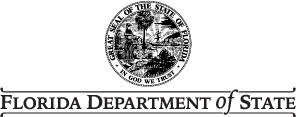
For Immediate Release
Friday, November 7, 2014
Contact: Brittany Lesser,
850.245.6522
Secretary of State Ken Detzner Encourages Honoring Native American Heritage Month in Florida
Secretary of State Ken Detzner and the Florida Department of State encourage Florida residents and visitors to learn more about the history of Native American culture and traditions in Florida during the month of November, National Native American Heritage Month.
“We honor the legacy of Native Americans in Florida throughout the year, and particularly in November,” said Secretary of State Ken Detzner. “I encourage everyone to visit Native American sites in Florida during this month and learn about the cultural heritage of our state.”
Two federally recognized tribes, The Seminole Tribe of Florida and The Miccosukee Tribe of Florida Indians, both call Florida home today. Additionally, there are many urban tribal citizens who live in the state – the 2010 U.S. census documented over 160,000 Native American or Alaska Native peoples in Florida.
There are many aspects of Florida’s dynamic Native American communities of the past and present that people can experience. November is an ideal time to explore this heritage at parks, museums and living heritage sites statewide. Travelers may encounter Native American heritage in the names of Florida cities, for example Hialeah (meaning “high prairie”), Okeechobee (meaning “big water”), Apopka (meaning “potato eating place”) and Tallahassee (meaning “abandoned fields”). All of these place names originate from the Mikasuki or Muskogee languages spoken by Seminole and Miccosukee people.
Join the Florida Department of State and the national conversation by sharing Florida’s Native American legacy on social media using #NAHM. Learn more about the rich traditions of Native Americans in Florida today by visiting VivaFlorida.org/NAHM2014.
Statewide Native American Heritage Sites to Visit in November:
Northwest
Heritage Park and Cultural Center
Located in Fort Walton Beach, the Indian Temple Mound Museum at the Heritage Park and Cultural Center is next to the National Historic Landmark Temple mound. Museum exhibits reflect the spiritual, technological and artistic achievements of the Native American people from 12,000 years ago though Spanish contact in the early 1500s. For more information visit Fwb.org/museums.
Letchworth-Love Mounds State Park
Located in Lloyd near Monticello in Jefferson County, this site includes Florida’s tallest recorded Native American ceremonial mound. There is a self-guided interpretive trail and a boardwalk where visitors can walk around the impressive 46 foot tall main mound. Honor Native American Veterans and visit this park for free on November 11, when all Florida State Parks waive fees for Veterans Day. For more information visit FloridaStateParks.org/Letchworth.
Mission San Luis
Located in Tallahassee, this living history site recreates life on the colonial Spanish frontier in 1703. On the site of the largest and most populated mission site in northwest Florida, Mission San Luis was once home to more than 1500 Apalachee Indians and Spanish missionaries. For more information visit MissionSanLuis.org.
Museum of Florida History at the R.A. Gray Building
Visit Florida’s official state history museum featuring exhibits of Florida’s prehistoric peoples from 12,000 years ago through to the modern era. Located at the R.A. Gray Building in Tallahassee, where additional exhibits are on display in the lobby, including artifacts discovered at Letchworth-Love Mounds in Jefferson County and a dugout canoe from Lake Munson. During your visit check out the iconic Indian Heritage Tableau bronze statuary, as well as the WWII monument at the front of the building. For more information visit MuseumofFloridaHistory.com.
Northeast Florida
Castillo San Marcos
Standing in St. Augustine for nearly 450 years, this national monument tells the important story of the many uses of the Castillo through the years, including as a prison for Seminole leader, Osceola, in 1837 and Apache warriors, including Geronimo, in the late 1880s. For more information visit Nps.gov/casa.
Paynes Prairie Preserve State Park
Located near Gainesville, this state park is rich in Native American history. Nature trails through the park provide views of this environmentally and historically significant area. The visitor center also features exhibits on the area’s rich past. Honor Native American Veterans and visit this park for free on November 11, when all Florida State Parks waive fees for Veterans Day. For more information visit FloridaStateParks.org/PaynesPrairie.
Central Florida
Brevard Museum of History and Natural Science
This museum in Cocoa features an exhibit on the National Historic Landmark site of Windover Pond, a nationally significant site in Brevard County that dates to over 7,000 years ago. For more information visit BrevardMuseum.com.
Weedon Island Preserve Cultural and Natural History Center
This 3,700 acre nature preserve in St. Petersburg was home to Native Americans for thousands of years. This site gave its name to the Weeden Island Culture, whose distinctive ornate pottery was first recorded on Weedon Island. For more information visit WeedonIslandPreserve.org.
South Florida
Ah-Tah-Thi-Ki Museum
This is the official museum of The Seminole Tribe of Florida and is located on the Big Cypress Reservation in Clewiston. Indoor exhibits depict the lives of the Seminoles in the late 1800s, and a nine-mile boardwalk outside takes visitors into the cypress swamp. For more information visit AhTahThiKi.com.
Miccosukee Indian Village and Museum of Tribal and Natural History
Located along the Tamiami Trail on US 41 in Broward County, this museum is owned and operated by the Miccosukee Tribe of Florida Indians. Featuring a museum, an Indian Village, air boat rides and alligator wrestling. For more information visit Miccosukee.com/Indian-Village.
# # #
About Viva Florida
In 2013, Florida reached a significant milestone, the 500th anniversary of Juan Ponce de León's arrival on Florida's east coast. Building on the success of Viva Florida 500 in 2013, The Florida Department of State continues to work with partners statewide to promote cultural and historical experiences through a multi-year campaign called Viva Florida, which promotes 12,000 years of Florida’s people, places and cultural achievements.
